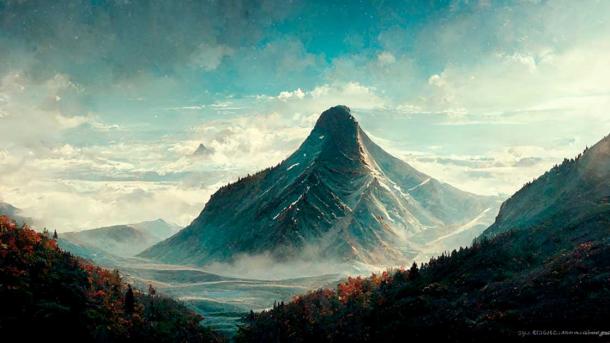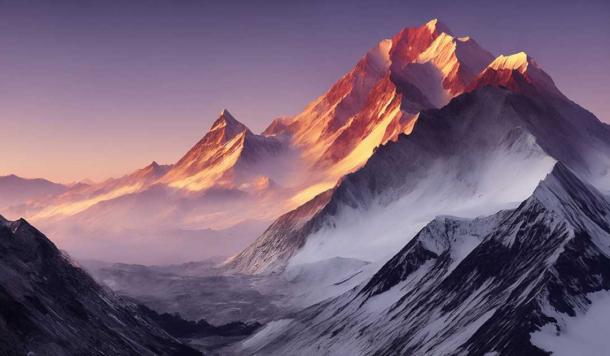Shambhala, which is a Sanskrit word meaning “place of peace” or “place of silence,” is a mythical paradise spoken of in ancient texts, including the Kalachakra Tantra and the ancient scriptures of the Zhang Zhung culture which predated Tibetan Buddhism in western Tibet. According to legend, it is a land where only the pure of heart can live, meaning those who have achieved enlightenment. Accordingly, the mythical Buddhist kingdom of Shambhala is a place where love and wisdom reign and where people are immune to suffering, want or old age.
Answering the question “what is Shambhala?” is no easy feat. Shambhala is said to be the land of a thousand names. It has been called the Forbidden Land, the Land of White Waters, Land of Radiant Spirits, Land of Living Fire, Land of the Living Gods and even the Land of Wonders.
The Hindus call it Aryavartha (meaning “The Land of the Worthy Ones”); the Chinese know it as Hsi Tien , the Western Paradise of Hsi Wang Mu; and to the Russian Old Believers, it is known as Belovoyde. But throughout Asia, it is best known by its Sanskrit name, Shambhala, Shamballa, or Shangri-la.

Shambhala is described as a land of paradise, believed by some to be hidden within Himalayan mountains. ( Mac / Adobe Stock)
The Legend of the Mythical Land of Shambhala
The legend of Shambhala is said to date back thousands of years, and reference to the mythical land can be found in various ancient texts. The Bön scriptures speak of a closely related land called Olmolungring. Hindu texts such as Vishnu Purana mention Shambhala as the birth place of Kalki, the final incarnation of Vishnu who believers claim will usher in a new Golden Age. The Buddhist myth of Shambhala is an adaptation of the earlier Hindu myth .
However, the text in which Shambhala is first discussed extensively is the Kalachakra. The Kalachakra refers to a complex and advanced esoteric teaching and practice in Tibetan Buddhism . Shakyamuni Buddha is said to have taught the Kalachakra on request of King Suchandra of Shambhala.
As with many concepts in the Kalachakra, the idea of Shambhala is said to have outer, inner, and alternative meanings. This makes it complicated for the uninitiated to truly understand what Shambhala really is. The outer meaning understands Shambhala to exist as a physical place, although only individuals with the appropriate karma can reach it and experience it as such.
The inner and alternative meanings refer to subtler understandings of what Shambhala represents in terms of one’s own body and mind (inner), and during meditative practice (alternative). These two types of symbolic explanations are generally passed on orally from teacher to student.
As the 14th Dalai Lama noted during the 1985 Kalachakra initiation in Bodhgaya, Shambhala is not an ordinary country:
Although those with special affiliation may actually be able to go there through their karmic connection, nevertheless it is not a physical place that we can actually find. We can only say that it is a pure land, a pure land in the human realm. And unless one has the merit and the actual karmic association, one cannot actually arrive there.

Buddhist depiction of Shambhala from Sera Monastery in Tibet. ( Public domain )
The Prophecy of Shambhala
The concept of Shambhala plays an important role in Tibetan religious teachings and has particular relevance in Tibetan mythology about the future. The Kalachakra prophesies the gradual deterioration of mankind as the ideology of materialism spreads over the earth.
When the “barbarians” who follow this ideology are united under an evil king and think there is nothing left to conquer, the mists will lift to reveal the snowy mountains of Shambhala. The barbarians will attack Shambhala with a huge army equipped with terrible weapons. Then the king of Shambhala will emerge from Shambhala with a huge army to vanquish so-called “dark forces” and usher in a worldwide Golden Age.
Though the Kalachakra prophesies a future war, this appears in conflict with the vows of Buddhist teachings that prohibit violence. This has led some theologians to interpret the war symbolically – the Kalachakra is not advocating violence against people, but rather refers to the inner battle of the religious practitioner against inner demonic tendencies.

According to Buddhist traditions, Shambhala is located in the Himalayan Mountains. ( Josh / Adobe Stock)
Shambhala’s Hidden Location and its Merging With Foreign Beliefs
The legendary story of Shambhala has appealed to a bizarre range of westerners, who have combined it with foreign myths and beliefs to create a mish-mash of ideas which are often confused with the original. Over many centuries, numerous explorers and seekers of spiritual wisdom have embarked on quests in search of the mythical paradise of Shambhala.
Amongst the German Nazis , for example, certain high-ranking officials have been remembered for their beliefs in the occult which led them to send official expeditions to Tibet. Study Buddhism reported that some postwar studies on Nazism made dubious claims that these expeditions were supposedly sent to find “the Aryan forefathers in Shambhala and Agharti, hidden subterranean cities beneath the Himalayas.”
While many have reported being there, no one has yet provided any evidence of its existence or been able to pinpoint its physical location on a map. Most references, however, place Shambhala in the mountainous regions of Eurasia.
Ancient Zhang Zhung texts identify Shambhala with the Sutlej Valley in Punjab or Himachal Pradesh, India. Mongolians identify Shambhala with certain valleys of southern Siberia. In Altai folklore, Mount Belukha is believed to be the gateway to Shambhala.
Meanwhile, modern Buddhist scholars seem to conclude that Shambhala is located in the higher reaches of the Himalayas in what is now called the Dhauladhar Mountains around Mcleodganj. Some legends say that the entrance to Shambhala is hidden inside a remote, abandoned monastery in Tibet, and guarded by beings known as the Shambhala Guardians.
For some, the fact that Shambhala has never been found has a very simple explanation – many believe that Shambhala lies on the very edge of physical reality, as a bridge connecting this world to one beyond it. While many disregard Shambhala as the fanciful subject of myth and legend, for others, a belief in Shambhala stirs an inner yearning to one day find this utopian kingdom.
Top image: The mythical city of Shambhala, as generated by AI technology. Source: EwaStudio / Adobe Stock
By Joanna Gillan
 RSS Feed
RSS Feed















 January 31st, 2023
January 31st, 2023  Awake Goy
Awake Goy  Posted in
Posted in  Tags:
Tags: 













